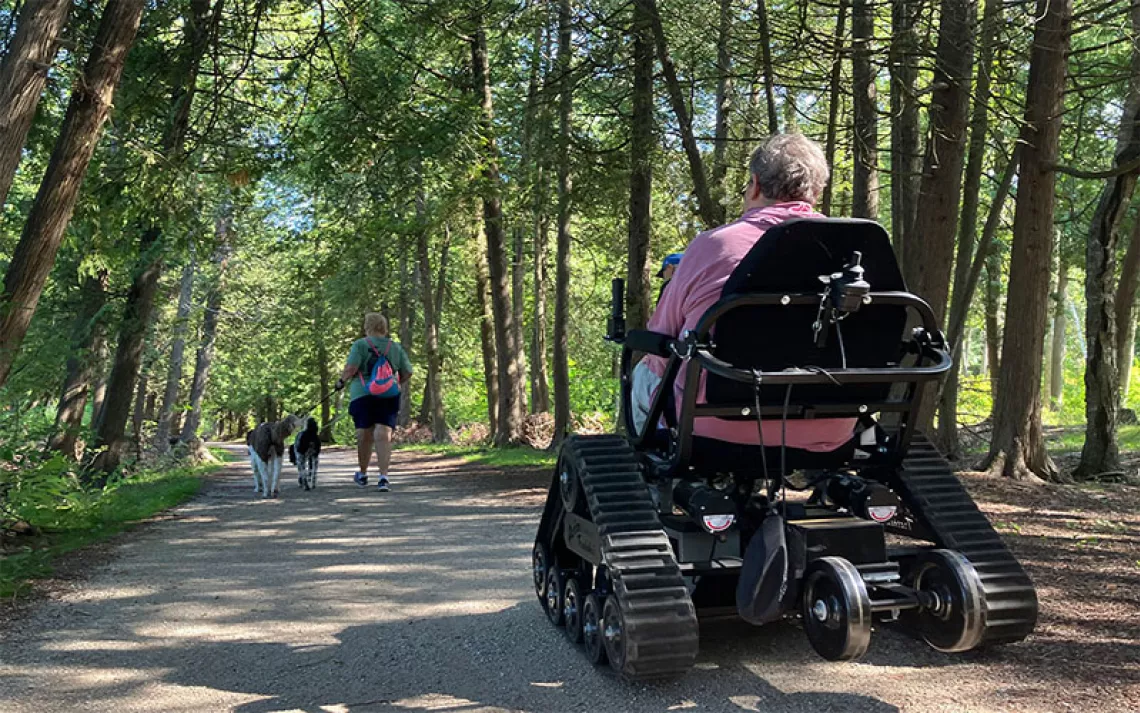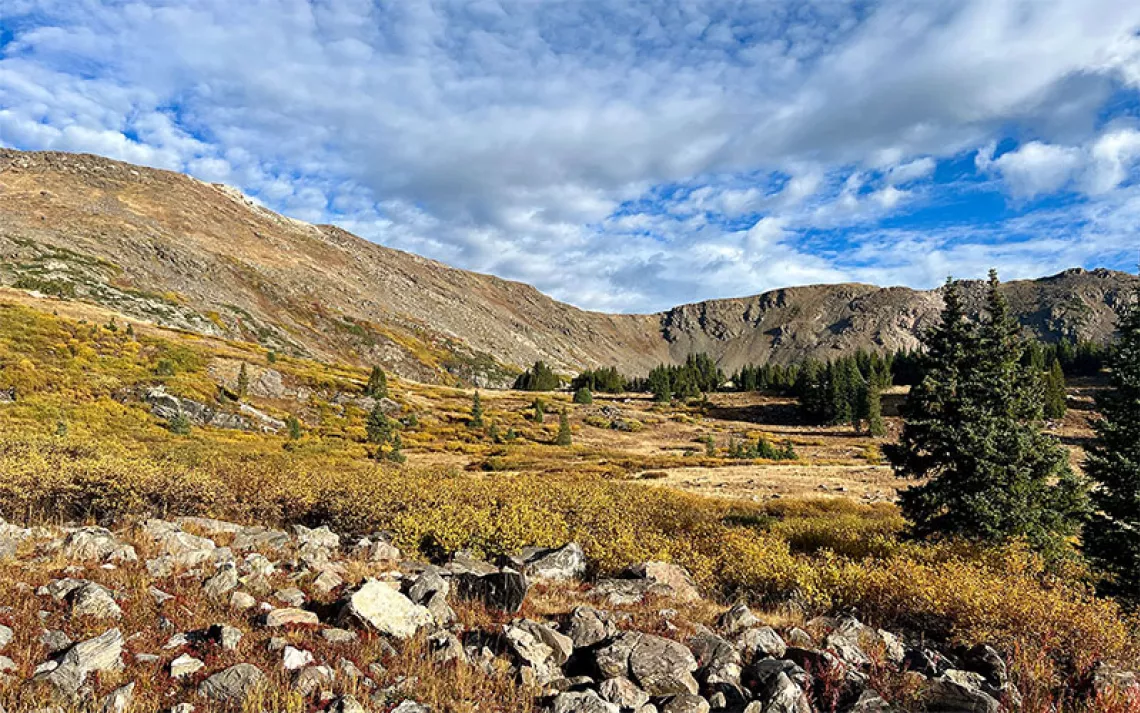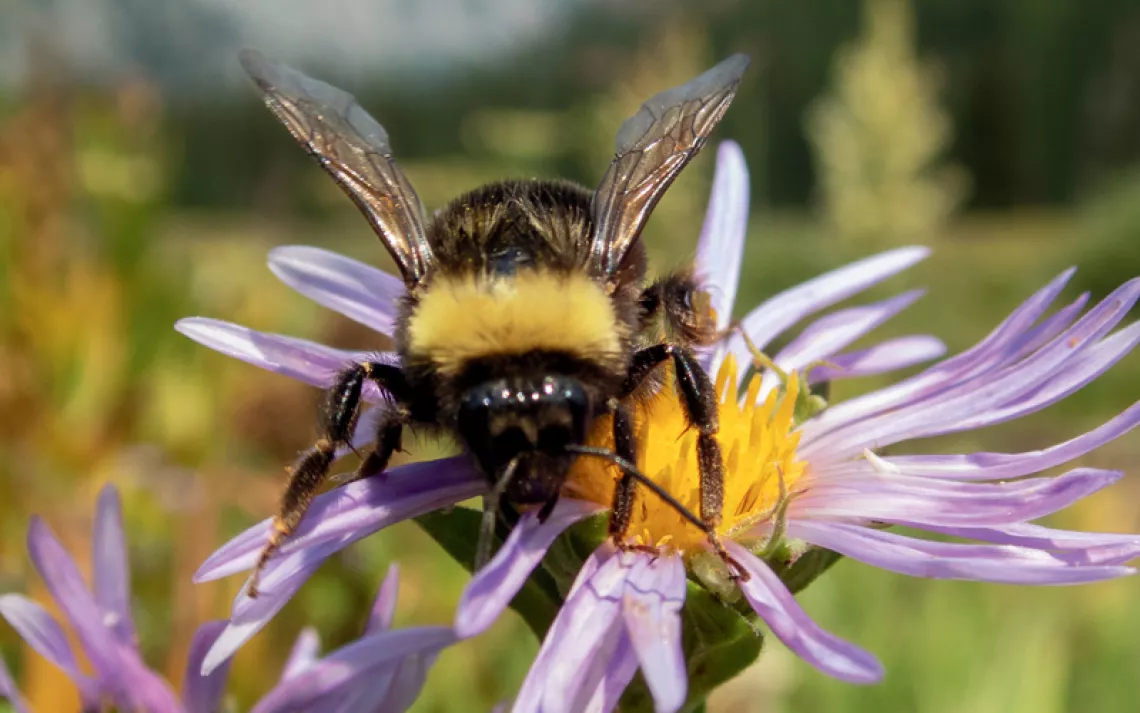Time for Real Talk About Power, White Privilege, and Conservation
PGM One wrestles with equity, inclusion, and justice in conservation and recreation
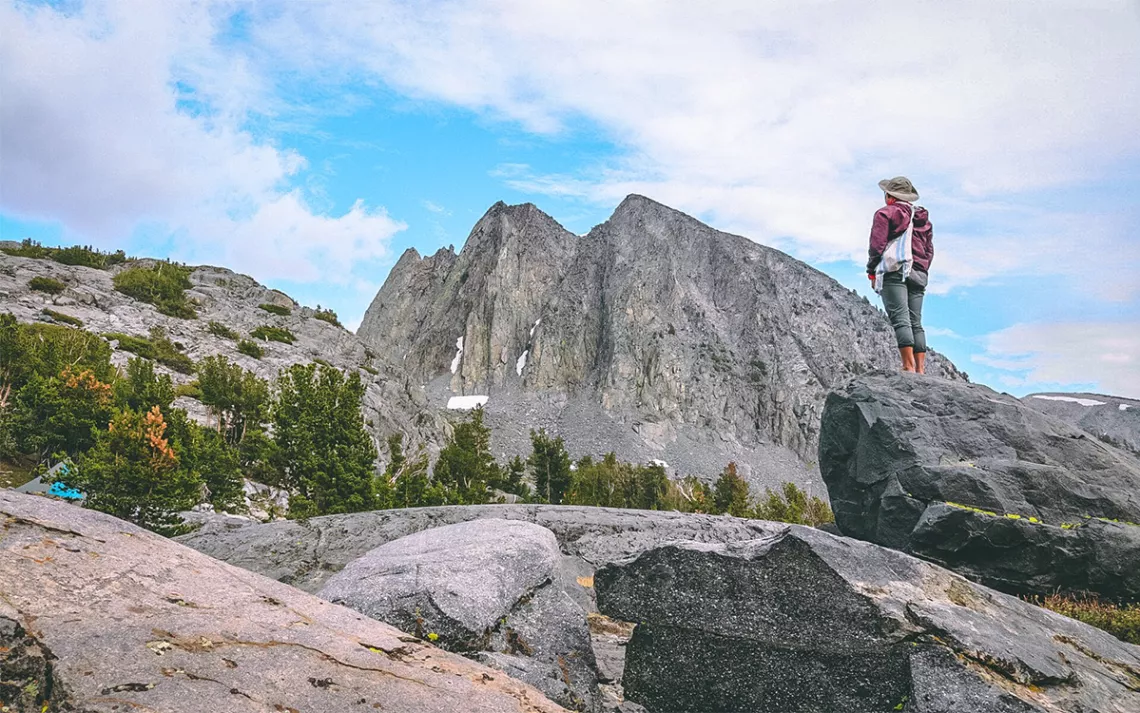
Eh Ler Tha by the south side of Duck Lake in 2017. The camera was attached to a mini-gorilla tripod and was set on a 10-second timer. | Photo by Eh Ler Tha
In 2007, Eh Ler Tha immigrated to the United States from a refugee camp in Thailand. He was nine years old. His family relocated to San Diego, where he later enrolled in City Heights High School. That’s where Tha discovered Adventure Club—an after-school program that helps underprivileged youths connect with, discover, and explore the natural world.
“I love being in the outdoors because it reminds me of home,” he told Sierra.
Adventure Club is just one of several programs offered by Outdoor Outreach, a nonprofit mainly serving marginalized young people in San Diego, including refugee and immigrant communities as well as foster children. Outdoor Outreach organizes approximately 500 trips a year, with 1,800 youths participating in 2017 alone. Activities include rock climbing, mountain biking, and snowboarding.
“A lot of times they are teaching us because of their own experience in their homelands of what their connection to nature is,” said Kim Stolkowski, the program operations manager for Outdoor Outreach, who oversees all of the field programs for the nonprofit and supports their leadership program.
Stolkowski spoke to Sierra while attending this week’s People of the Global Majority in the Outdoors, Nature, and Environment (PGM One) conference, an annual summit dedicated to stoking dialogue about equity, inclusion, and justice in the environmental and conservation movements, and in outdoor spaces. The three-day conference, held at the Asian Cultural Center in Oakland, featured presentations, panel discussions, art happenings, and outings. During talks and activities such as “The Color of the Outdoors,” “Artivism for QTPOC Healing,” and “Tools for Supporting Single Identity/Affinity Experiences in the Outdoors,” discussion leaders engaged in dynamic conversations with fellow panelists and attendees about how to redress entrenched systems of racial, cultural, and sexual power and privilege in the conservation and outdoor recreation movements.
Stolkowski traveled from San Diego to attend, both to offer insights on how Outdoors Outreach programs work and to learn about the tools and strategies others are employing for their own. “We want to help inform that conversation, about how we can create the circumstances whereby nature is more equitable for all people, is safer for them, and where everyone can connect to nature in their own unique way,” she said.
One of the day’s panel discussion leaders, Lornett Vestal, is the Southeast military and veterans coordinator for the Sierra Club. He grew up in Chicago, where as a young man, the outdoors for him was about visiting Lake Michigan. Later he would take trips to the woods in downstate Illinois or go to Yellowstone for a taste of wilder nature. When Vestal was serving in the navy, his experience of the natural world mainly involved watching it pass by as he sailed from one destination to the next. Now he organizes programs and outings that help military veterans connect with the outdoors, during which some participants are discovering the natural world for the first time.
In a conversation after his talk, Vestal pointed out that while attending another conference a few months back, both the organizers and the attendees were mostly white. That’s part of the reason why PGM One is so important: to confront some of the challenges that people of color in the conservation and outdoor communities face, while also trying to craft solutions that can increase diversity at environmental organizations and in the outdoors.
“We need to have an in-depth discussion about diversity in the outdoors and in the outdoor industry,” Vestal said. “There’s always been this idea that people of color don’t get outdoors, that they don’t care about the environment. That’s just wrong. We are directly impacted by climate change. We are directly impacted by pollution. We are directly impacted by public parks being closed down in poor and low-income communities, communities of color. We have been at the forefront of this movement from the beginning. It’s up to us to take the lead: We’re here. We’re not going anywhere. We’re all a part of this movement for change.”
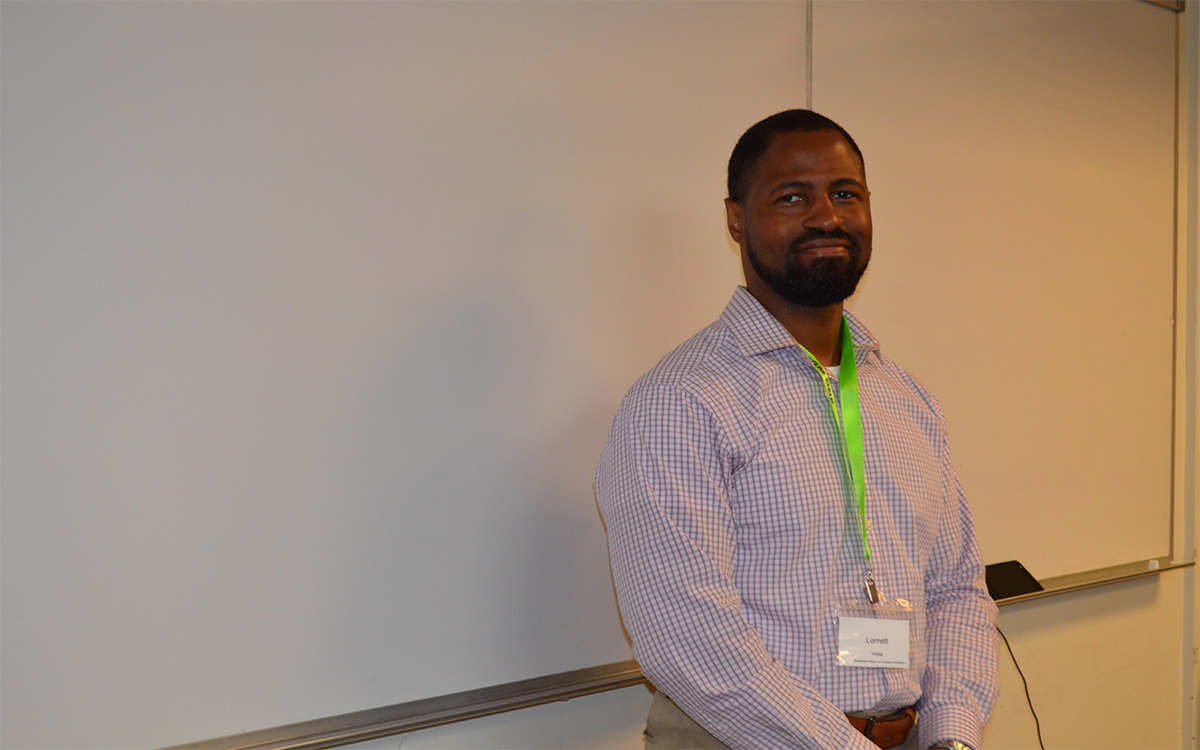
Lornett Vestal at the PGM One conference | Photo by Jonathan Hahn
Sergio Avila, another co-presenter at PGM One, is a Tucson-based local outdoors coordinator in the Southwest for the Sierra Club. He grew up in Mexico City and today lives in the land of the Tohono O’odham, one of the largest (by area) indigenous nations in the country. Avila has been in the environment and conservation community for 10 years. A wildlife biologist, he has studied jaguars, mountain lions, rattlesnakes, sea lions, and monarch butterflies, among other species. He recently became a U.S. citizen in part as a response to the outrage he felt at President Trump’s attacks on immigrant communities.
“Going to all those wild places and looking for all those wild species, all this time, in my life, in my career, I realized I had been looking at wild places without people in the foreground,” Avila said during his talk. “What I’ve learned is that not only do people need to be part of my picture of the goal of protecting nature, but that they are doing the protection of nature. They are not just in the picture; they are helping create that picture.”
Kelsi Ju is a former national park ranger with the National Park Service. For three years she served as park ranger at Muir Woods, in the Golden Gate National Recreation Area. She also spent two years in the Peace Corps. Her parents are Chinese and Okinawan. Ju, who currently works at Santa Clara County Parks and Recreation, came to PGM One on her personal time.
“I came to PGM One because it’s needed,” she said while waiting for one of the panel events to begin, “not just as a person of color, but to help create a network of support and ideas for other people of color. In environmental fields, it hasn’t necessarily been the most equitable for us. We need to have these very real, honest discussions with our peers who are people of color, not just so we can learn to self-advocate for ourselves, but also so we can be the best allies for all of our other friends and family members.”
Ju says that the real work that needs to be done now is in education. “All perspectives need to be taught and shared with more people. With education, hopefully we can make that process more equitable. It has to be more intentional and active.” She points to Muir Woods National Monument as an example. The man who donated the woods to the National Park Service, Congressman William Kent, was “one of the greatest proponents of the Chinese Exclusion Act.”
For Ju, as for many of the participants at PGM One, environmental conservation and recreation is not just about advocacy and trying to get people outdoors. It’s also about deconstructing the stories we tell ourselves, about our history, about where we’ve been, about why we have the resources we have, and who tends to benefit the most. “It starts with youth,” she said about where the work needs to begin, “and talking with young people about how to be more conscientious. We should be talking to them about the fact that you are a part of something: you are part of your family, your community, your state, your country. How can you spend your time on Earth to best benefit people, including yourself and those around you, in order to make a positive impact?”
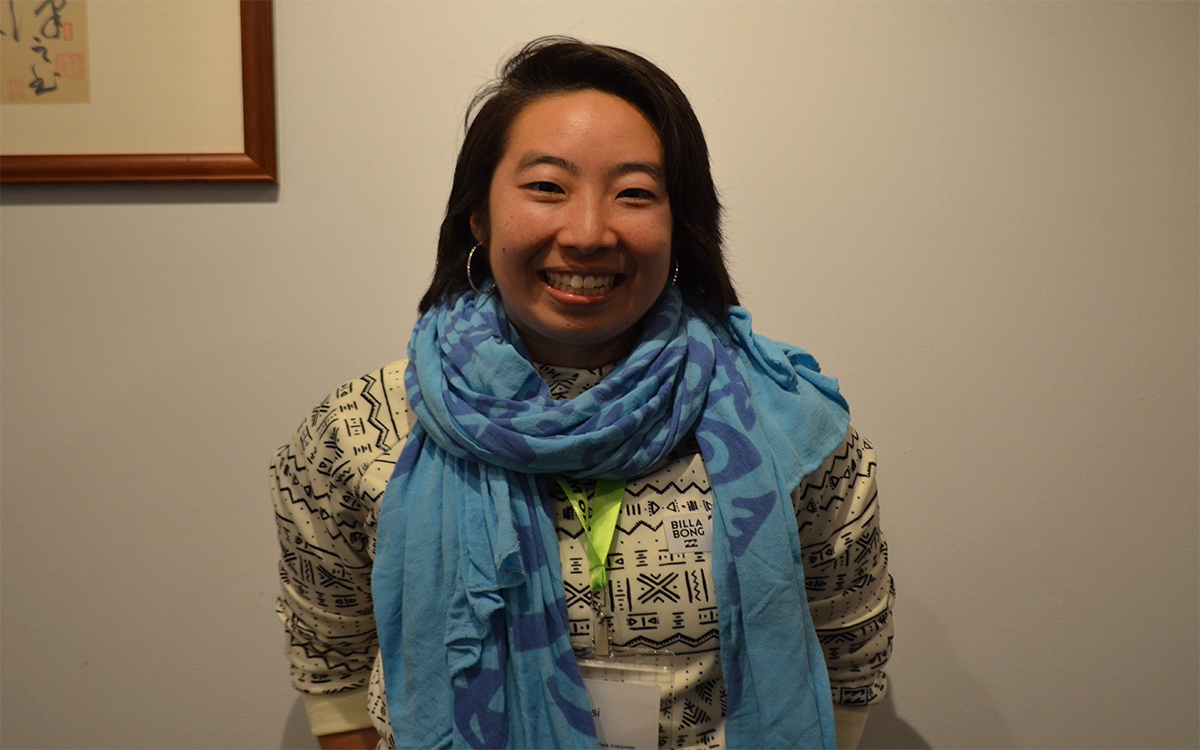
Kelsi Ju at the PGM One conference | Photo by Jonathan Hahn
It’s the same message that Kim Stolkowski, the program operations manager for Outdoor Outreach, tries to communicate through her programs, and to get across to the young outdoors leaders who participate in those programs—leaders like Eh Ler Tha.
After participating in Adventure Club, Tha then applied for the one-year leadership program that Outdoor Outreach offers for youths demonstrating exceptional community-building and leadership skills. Applicants accepted to the program are trained to be educators and advocates. They also become eligible to apply for employment with Outdoor Outreach. Tha was selected for the 2017 leadership cohort. He is now in his senior year.
“The leadership program helped me discover my true passion to work in the outdoor industry,” Tha said.
And that’s not all: Through the program, he also discovered a passion for photography. At just 18 years old, Tha has accumulated an impressive portfolio of beautifully shot nature and city photography, demonstrating a raw talent for scenes and landscapes as well as for capturing the complex, human dimension of his subjects (check out his photography on Instagram).
“I love taking photos because it allows me to tell a unique story from my own perspective,” Tha said. “Outdoor photography has inspired me to acknowledge the beauty of nature and to appreciate the life it gives. I want to inspire people through my photos, to be able to share my experience and use it as advocacy for the outdoors.”
 The Magazine of The Sierra Club
The Magazine of The Sierra Club
